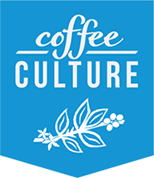Each week I discuss the most important factors that you need to consider when selling coffee. The one that seems to be the most oft overlooked is milk, and the importance of milk texture in milk based (coffee) drinks. According to the Coffee Consumer Research report issued by Bord Bia last September 8/10 coffees are sold with milk. So believe it or not, this affects eighty percent of your customers.
Texturing milk, as we like to call it, as opposed to frothing or bubbling or foaming milk is quite a definite skill. It is a technique that requires hours and hours of diligence, patience and practice. There is no easy way. There are no quick tricks. You just gotta understand milk – so there’s a little bit of chemistry involved. Milk is susceptible to changes in the dietary conditions of cows, the health of the cow and the food and region a cow eats and lives in. All of these change the taste and makeup of milk.
There are three things in milk that directly influence the taste of coffee beverages; milk sugar, fat and protein content. In its simplest form, when you heat milk ‘properly’ it gets sweeter. Cast your mind back to maybe when you were a child and your Mum served you warm milk and biscuits for dunking made with real milk it tasted sweet. The reason is that the milk was heated to release the milk sugars.
Whole milk (unlike skimmed milk) has more body, and is thicker and heavier. The difference between the two is the fat content. Proteins are the third main concern for the barista. Simply put they give us the texture. Beyond this the fat content of the milk greatly affects how proteins react during the texturing process, as does the temperature. Fat is influenced by temperature so if you take the temperature too high you’ll have a dissatisfying taste of burnt milk.
So if you can understand this rather simple explanation on how milk behaves, next all you gotta do is practice getting that silky smooth texture to make a clean milk texture on top of your latte’s and cappuccino’s. Check out www.coffeeculture.ie for videos on making latte’s and cappuccinos for guidance and further information on our barista training courses.

